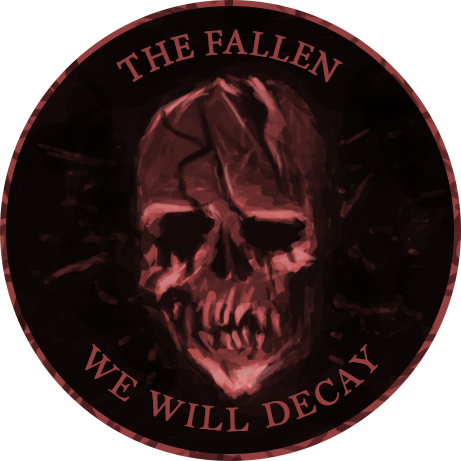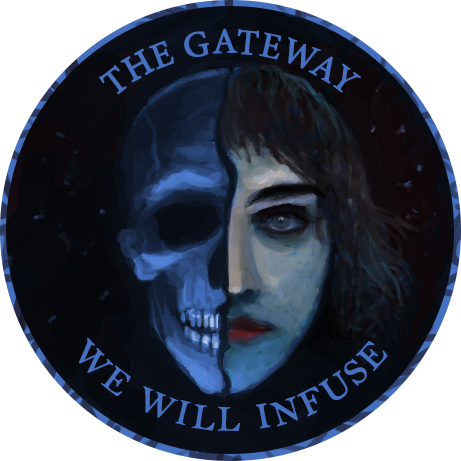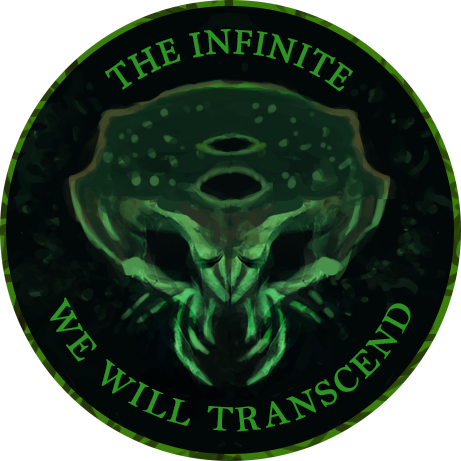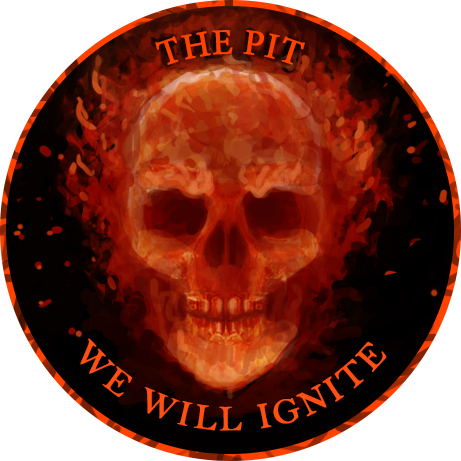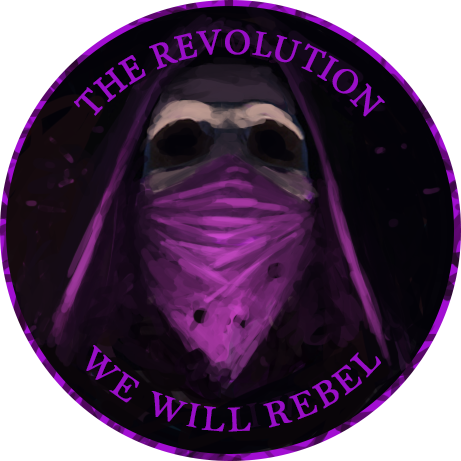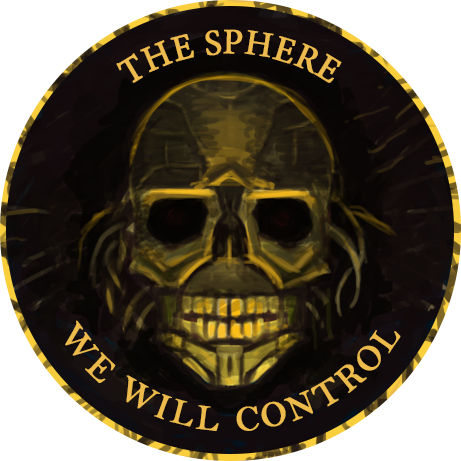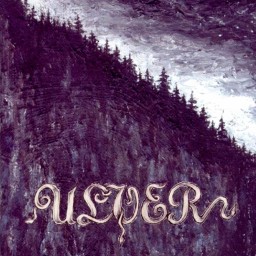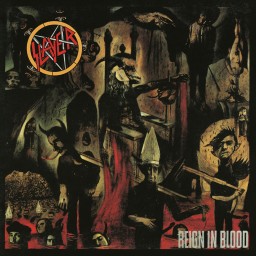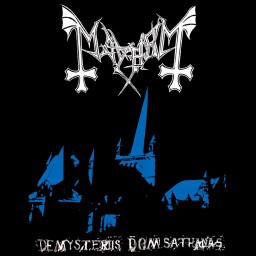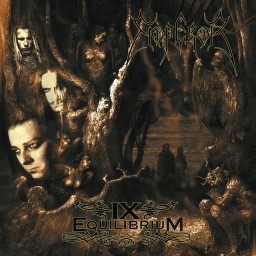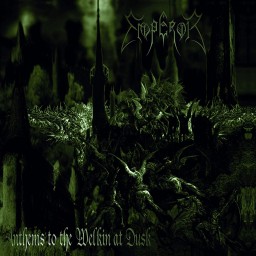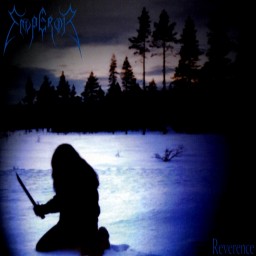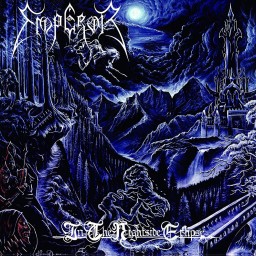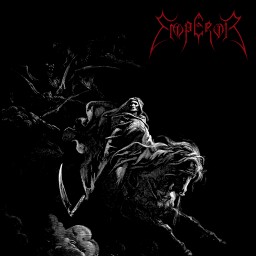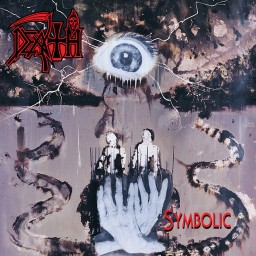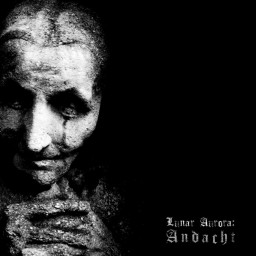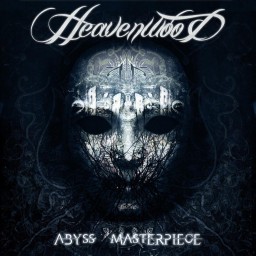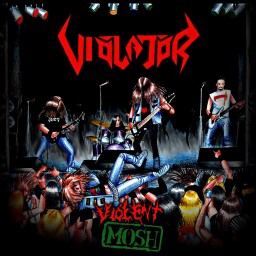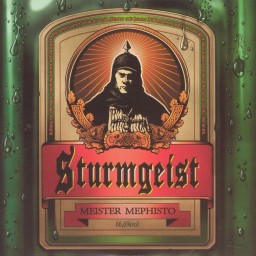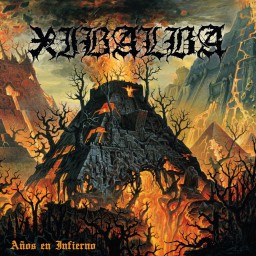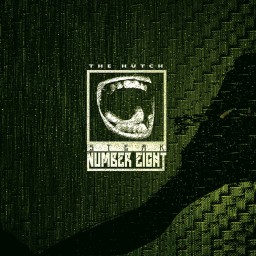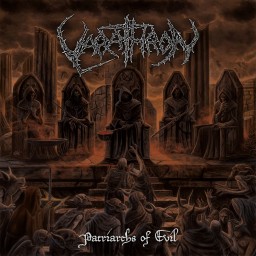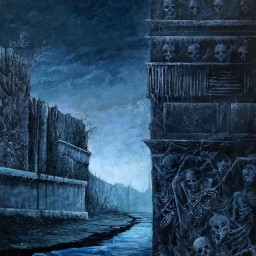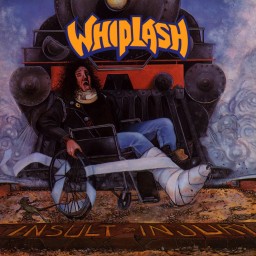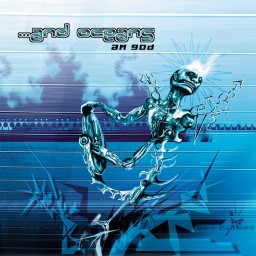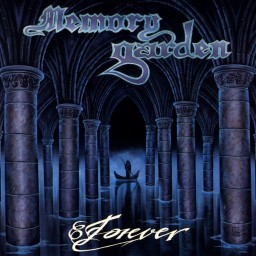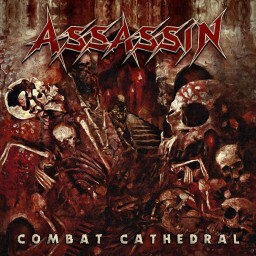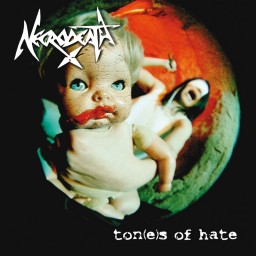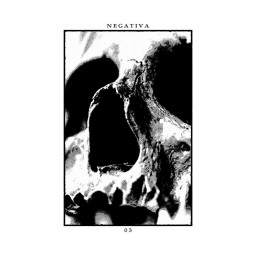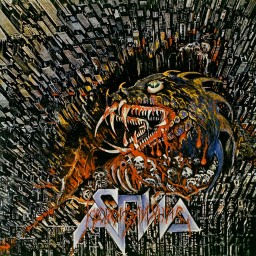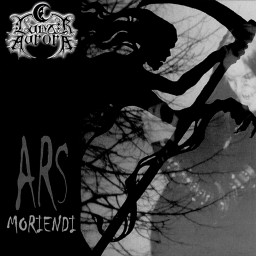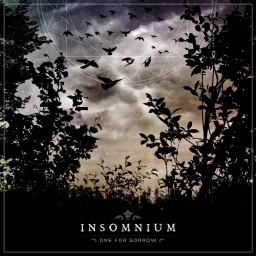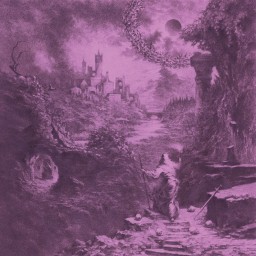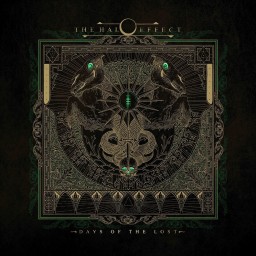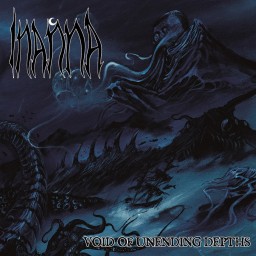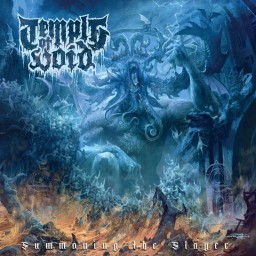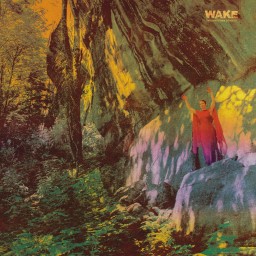Ben's Reviews
A dark fairy tale narrated through captivating folk inspired black metal. An amazing, essential release!
Ulver’s Vargnatt demo had revealed a band willing to break the rules and while it had some production issues and a few too many ideas thrown into the pot, it was clear that these Norwegians had a lot of potential. There were however significant changes to personnel prior to entering the studio to record a debut full length album, so it wasn’t entirely clear what the resulting sound would be like. Garm still held vocal duties, which might have seemed doubtful after his overly theatrical and at times embarrassing effort on Vargnatt. Two out of the three guitarists present on the demo had left the band, with Håvard Jørgensen thankfully remaining after his gorgeous acoustic work had been the highlight of the demo. The bassist (with the very black metal name Robyn) had also disappeared, and most tellingly, Carl-Michael Eide was no longer the drummer either. Considering how much influence Carl-Michael seems to have had on Vargnatt, with the overall sound recalling his future Ved Buens Ende work, you’d think this mass exodus would make an indelible mark on the development of the band. Not to be defeated, Garm and Håvard recruited Torbjorn Pedersen (aka Aismal) as a second guitarist, Hugh Stephen James Mingay (aka Skoll) and Erik Olivier Lancelot (aka AiwarikiaR) and the almost entirely new Ulver got down to business.
Ulver recorded Bergtatt – Et eeventyr i 5 capitler in Endless Lydstudio, Christiania, Norway, at the end of 1994. The title translates as Taken Into the Mountain – A Fairy Tale in 5 Chapters and is the first part of a trilogy of albums known simply as The Trilogie. The themes of these albums are taken from Scandinavian folklore with Bergtatt focusing on an ancient tale of mythical creatures that live in the mountains. Folklore suggests that these trolls are big, hairy and stupid, and easily defeated by any man with courage, but that they also have a penchant for capturing maidens (preferably princesses) that wander into the mountains alone. Once captured, these unfortunate females are forced to spin all day and scratch the trolls head at night, and I can only assume that these tales are used to scare little girls into not running off alone or speaking to strangers, the way Little Red Riding Hood is used in many parts of the world. As the title of the album suggests, Ulver tell this story over five tracks, with the lyrics primarily in archaic Danish with smatterings of Norwegian. It might all seem a bit silly to base a black metal album around a story like this one, but Ulver are no ordinary black metal band. The new line-up had let go of many of the elements that made Vargnatt so mixed and decided to focus on the stronger black and folk components. Could folk infused black metal be narrating a dark, folk inspired tale from an ancient time work?
The answer is categorically yes! Bergtatt is a stunning album that’s so atmospheric and enchanting, you just can’t help being swept off into shadowy forests where strange creatures dwell, just as the protagonist is in the story it recounts. It’s rare that bands attempt to create such a vivid environment while utilizing the tone and intensity of the music in combination with the lyrics to lead the listener in such a defined way (Edge of Sanity’s Crimson comes to mind). The harsh black metal sections are used sparingly and only when necessary to communicate the darker phases of emotion running through the story and the same can be said for the more melodic periods and the gentle folk passages. Yet not only does this varied structure express the shifting nature of the narrative, Ulver have created smoothly flowing compositions that function magnificently regardless of their aim. Chapter I is called I Troldskog Faren Vild (Lost in a Forest of Trolls), where a young maiden finds herself lost in a forest after falling snow hides her path. There is no semblance of black metal in the opening track and Garm’s clean vocals are gorgeous, having a kind of innocence to them that works well in the context. The improvement in his performance between Vargnatt and Bergtatt is astounding and makes me wonder whether he just needed some time to find his strengths. The simplistic folk inspired riffs are accompanied by some beautiful leads and nice acoustic work, making this a calming and almost hypnotic start to the album.
Soelen Gaaer Bag Aase Ned (The Sun Goes Down Behind the Hills) is the title of Chapter II and it starts off with a similar vibe, with around a minute of nice acoustic guitar and flute (performed by session musician Lill Kathrine Stensrud) giving the impression that all is calm and well for our lost maiden. At this stage, first time listeners might be wondering how Bergtatt is associated with black metal at all, perhaps checking to make sure they’re listening to the right album and not a purely folk metal release. However, as the sun goes down on our poor maiden and the trolls come out to hunt, things also take a much darker turn for the listener, with the track abruptly breaking out into blistering black metal. AiwarikiaR launches into more than competent blast beats, the guitarists crank out venomous tremolo-based riffs and Garm unleashes some seriously violent black metal snarls. But it’s really at the two-minute mark that the brilliance of Bergtatt becomes apparent. The track seamlessly changes tact again, bringing the folk elements back into play, harmoniously combining the two distinct styles and demonstrating just how brilliantly Ulver blended everything into a wondrous black folk hybrid. The Sun Goes Down Behind the Hills finishes on a softer note with night having fallen and our maiden, alone and scared, manages to drift off the sleep on a bed of moss.
Chapter III is titled Graablick Blev Hun Vaer (She Noticed She Was Being Watched) and is where Bergtatt takes its most vicious turn. With our maiden waking in the night to realise she is being watched from afar and subsequently panicking, the band produces the most ferocious black metal sections on the album. Relentless drumming and sharp, cold riffs clearly present the dangerous situation unfolding, and Skoll’s slow precise bass gives the phase a weird tone that no doubt inspired bands like Shining down the track. As is the shifting nature of the album, the track fades out around halfway through, to be replaced by eerie distant piano (performed by session musician Steinar Sverd Johnsen, known for his work with Arcturus and Covenant) and the sound of running footsteps through the forest. I initially found this section to be off-putting, but now that I understand its relevance to the fairy tale being told, I can’t help but picture our maiden running for her life while trolls insistently pursue her. It’s evocative and vivid and acts as a sort of mid album prompt to convey a visual environment before Ulver remind you of the urgency by shifting back to black metal for the remainder. I can’t emphasize enough how wonderful Garm’s vocals are through all these transformations. He gives so much weight and conviction to every word he shrieks while his moody choir-like chanting gives each scene an epic and mysterious quality.
After such a torrid outburst of fear and aggression, both Bergtatt and our maiden find a much-needed moment of serenity. She wakes to find she is unharmed and seemingly safe on the bed of moss. Was it all a bad dream? The fourth chapter Een Stemme Locker (A Voice is Calling) seems to suggest that the trolls have ceased the physical chase and commenced the use of trickery to capture our maiden. While A Voice is Calling is an entirely folk based track, it is one filled with a sense of melancholy and apprehension. Håvard’s (I can only assume it’s him given that he performed all acoustic guitars on Vargnatt and Kveldssanger) simple strummed rhythm and gorgeous acoustic leads take centre stage with a seemingly distant and organic sounding metronome creating the image of softly dripping water. Yet Garm’s low mutterings and whispers give proceedings an element of uncertainty, which is beautifully built on with the addition of Lill Kathrine Stensrud’s angelic yet mournful background vocals. It flawlessly portrays the situation unfolding with the trolls enchanting the maiden with visions of beauty and soft beckoning words. “Girl, what do you expect to find here? Follow me into the mountains. Where else can you find the memory of happiness, of home?” This divine piece of music finishes with our maiden questioning her senses “I don’t understand! I feel so weird! Tell me...do I have to go?”
Which brings us to the final track and chapter, which is forebodingly named Bergtatt - Ind I Fjeldkamrene (Into the Chambers of the Mountain). The dark atmospheric riff that opens this track leaves us with no doubt that our maiden has succumbed to the deceitful summoning of the trolls and is being whisked away into their kingdom deep within the mountain. Rather than close off this story with a purely black metal maelstrom as might seem appropriate, Ulver blend Bergtatt’s elements in one final eight-minute epic that gloriously captures the themes of its entirety in a fitting finale. It’s amazing how varied tracks like this one are, without ever seeming contrived or forced in the slightest. Everything is positioned so purposefully, and any repetition is given character and identity through the introduction of additional layers and instruments. The melody at around the five-minute mark is immensely moving and when combined with Garm’s fierce vocals make for an album highlight in its dying moments. Into the Chambers of the Mountain closes with the sounds of running water and pleasant acoustics, suggesting the ordeal is now over for our unfortunate maiden, and that the forest now returns to its romantic and lush state, inviting further unsuspecting wanderers into its shadowy depths where the trolls await patiently.
I’m sure it’s clear by now that I think Bergtatt – Et eeventyr i 5 capitler is an utterly incredible album. Its only flaw is that the whole thing is over in under 35 minutes when I’d rather it continues indefinitely. I’ve owned it for fifteen years now and I doubt I’d go a month without experiencing it at least once. From the fairy tale themes right through to Tanya Stene’s (she produced the covers for the whole trilogy) ever-so appropriate artwork, Bergtatt is just about the perfect album for my tastes, which is why I can’t help but be disappointed that Ulver would never again explore this territory. Sure, they would complete their trilogy with another black metal album, but Nattens Madrigal is a very different beast to this one, stripped of the folk altogether and more akin to early Darkthrone. Ulver have never failed to create beautiful music no matter what style they take on, but I don’t think I will ever enjoy anything they produce as much as this debut masterpiece. Albums like this one make me wish I hadn’t been so generous with my five-star ratings in the past, as I place it at the very echelon of music in any form. “She screams with her last breath, an epic we will never forget, a body turned to stone. The moon is gone, the stars have gone out. It rains and blows hard far in the north, in the mountain under the ground...there they play!”
Genres: Black Metal
Format: Album
Year: 1995
A controversial yet undeniable classic that set the bar for metal intensity.
Reviewing Slayer’s Reign in Blood album is probably a bit pointless. After all, the album has received so much recognition and praise over the years that me adding my own five cents isn’t going to make much difference. We’re talking about an album that received plaudits such as: Kerrang! Magazine described it as “the heaviest album of all time”. Metal Hammer Magazine named it “the best metal album of the last 20 years”. Stylus Magazine added “the greatest album of all time”. Over two decades later and the recognition just keeps on coming. It came in at number 1 in Terrorizer Magazine’s reader’s poll for “most important album of the eighties”. It’s even included in the 1001 Albums You Must Hear Before You Die, a very big deal considering how shunned metal usually gets in such lists. When guitarist Kerry King was asked why Reign in Blood is so special to so many people, his answer was "If you released Reign in Blood today, no one would give a shit. It was timing; it was a change in sound. In thrash metal at that time, no one had ever heard good production on a record like that. It was just a bunch of things that came together at once." After witnessing Slayer perform the entire album live at the end of their set list in Sydney a few months back, I can safely say that Mr King is wrong. This wasn’t just right time, right place. Reign in Blood is as fucking awesome today as it was in 1986!
Let’s take a trip back to that very year and see how this classic album came about. Slayer’s previous album Hell Awaits had been a huge success and the band’s producer and manager Brian Slagel knew that there was every possibility that their next release could hit the big time. Rather than continue with the low budgets and not particularly advanced recording equipment that his own label Metal Blade Records could offer the band, Slagel aimed high and began discussions with several larger scale labels. One of these labels was New York based Def Jam Recordings, but when founder Rick Rubin expressed interest in Slayer, Slagel was reluctant due to Def Jam being primarily a hip hop label. When drummer Lombardo was informed of the interest from Def Jam, he tried to make contact with Rubin on his own accord, eventually tracking him down through Def Jam’s distributor Columbia Records. He convinced Rubin to attend a Slayer concert where he clearly made the decision that he needed this band on his label. He would eventually track the band and Slagel down at a European music convention, where he persuaded them to sign with Def Jam Recordings. This decision was key to the success of Reign in Blood as having a major label recording budget combined with the fresh perspective of a producer with no previous experience with metal resulted in an album vastly different to any that had come before it.
Once Reign in Blood was finally released on October 7, 1986, it was immediately met with enormous critical praise, but Slayer would face controversy both prior to and following that release date. Columbia Records refused to distribute the album due to its graphic artwork and lyrical content, with Rubin eventually distributing the album through Geffen Records. Even Geffen were fearful of backlash and purposely left Reign in Blood off their release schedule for fear of negative media attention. (For more info on this controversy and its impact on the public and band, see the sidenote at the end of this review.) Slayer’s target audience, being fairly used to litigious content in their albums, were unfazed, and were blown away by the clarity, precision and power of the new material. King later remarked "It was like, 'Wow—you can hear everything, and those guys aren't just playing fast; those notes are on time'" which is arrogantly put but bang on the money. The production was so good that it became apparent that the chaotic and frenzied nature of Slayer’s music was in fact incalculably talent-filled, controlled aggression. Every element of the band is performed at high speed with a natural technicality that never feels forced, just brutally organic. But this increase in production is by no means the only shift in the Slayer sound.
The band had become bored with the predictable structures and repetition of riffs that filled their previous albums, as well as those by thrash metal legends Metallica and Megadeth. They decided to cut the excess off, leaving only the most intense material and not giving the listener any chance to relax. This method resulted in a ten-track record with a running time of less than 29 minutes, but Slayer fit more into this short period of time than most hour-long epics could dream of. Each track joins onto the next one seamlessly making Reign in Blood play like one solid half hour of awe-inspiring thrash metal ferocity. Opener Angel of Death runs into Piece by Piece which in turn becomes Necrophobic and before you know it you’re half way through an album of exceptionally recognisable classics seemingly without blinking or taking a breath. Hanneman and King lay waste with a continuous flow of awesome riffs and mind-blowing leads, Lombardo puts in a performance for the ages with flawlessly efficient yet crushingly potent drumming, while Araya hollers atrocities at a hundred miles an hour while remaining completely in command of proceedings. Each member of the band is in their prime and by the time the drool worthy title track breaks off into an apparent rain of the red stuff, you’ll be grinning ear to ear and desperately reaching for the play button again...and again...and again...
Sidenote: As mentioned earlier, Reign in Blood’s release was delayed due to concern over its lyrical themes and graphic artwork. The album cover was designed by Larry Carroll, who was known for his political illustrations for media such as The New York Times. It’s depiction of Hell, complete with a goat-headed Satan performing a Hitler salute and being carried on a throne surrounded by fire, severed heads and the impaled, was highly controversial and overtly satanic. To make matters worse, the subject matter, particularly the lyrics of opener Angel of Death, also provoked allegations of Nazism. The track describes the horrific acts of Nazi physician Josef Mengele, who was dubbed the Angel of Death due to his surgical experiments on patients at the Auschwitz concentration camp during World War II. These acts included experimental surgeries performed without anaesthesia, transfusion of blood between twins, the sewing of bodies, isolation endurance, gassing, injections with lethal germs, sex change operations, the removal of organs and limbs, and abacination (where the victim is blinded by having a red hot metal plate held before their eyes), most of which are described in Slayer’s lyrics. The song caused outrage amongst Holocaust survivors and the public in general, with the band being labelled Nazi sympathisers and racists.
These labels would follow the band throughout their career and they’ve continually had to defend their use of the material. They’ve stated numerous times since the release of Reign in Blood that they do not condone Nazism and are merely interested in the subject. Hanneman was inspired to write the lyrics for Angel of Death after reading several books describing Mengele and his various forms of torture. He says the reason there is no mention in the lyrics that what Mengele was doing was evil is because he didn’t think it necessary. Surely that was obvious to everyone right?! As flimsy as this defence is, it certainly would have stood up better if the band hadn’t attempted to capitalise on the controversy by adding an eagle to their logo that distinctly resembles the Reichsadler (during Nazi rule, a stylised eagle combined with the Nazi swastika was made the national emblem by order of Adolf Hitler in 1935) for their early nineties releases. Check out the cover of Decade of Aggression if you’re not sure what I’m talking about. Hanneman also placed SS stickers on his guitars and wrote the song SS-3 for Divine Intervention which speaks of Reinhard Heydrich, the second in command in the Schutzstaffel, so if Slayer wanted to clear their name and rid themselves of this negativity, they certainly went about it the wrong way. I guess there’s no such thing as bad publicity.
Genres: Thrash Metal
Format: Album
Year: 1986
A classic album that epitomizes everything that is black metal. Damn essential!
Mayhem's De Mysteriis Dom Sathanas album was and is much more than just another black metal album. This release (and the band behind it) has a history attached to it that makes for fascinating reading (including murder, suicide and church burnings) and probably more than any other album, epitomizes what black metal was truly meant to be. Now I'm not one of those guys that says black metal should remain "true" and should never venture out into more experimental realms. Personally, I think that all genres become stale unless they broaden their influences and become a little adventurous at some point. Nor am I someone that encourages anti-authoritarian or anti-religious actions (despite my skeptical nature). But right from the outset, this wonderful little genre we call black metal was designed to be evil, inaccessible and morbidly atmospheric. De Mysteriis Dom Sathanas is all of those things and has an incredible aura attached to it that's difficult to describe.
First and foremost, I think Euronymous was simply a genius when it comes to writing malevolent, cold, black metal riffs. Every track on this album has multiple cracking riffs and I wish so very much that he had been able to continue his musical vision and not been cowardly slain by Varg. Hellhammer's drumming is incredible to say the least and while every performance he has ever produced is worth listening to, I think this one is the one he will be remembered for. It's strange to read that Varg's bass lines were lowered in the mix after he murdered Euronymous as I can't say it had all that much effect. They are usually quite audible throughout the album and are certainly of a high quality. Which brings me to without doubt the most controversial aspect of De Mysteriis Dom Sathanas. Attila Csihar! I'll be the first to admit that Attila's vocals are incredibly strange and at times just downright ugly. When I first heard the album way back in the mid 90s, I was put off so much by his performance that I couldn't listen to the album at all. But slowly over time I came to accept them and then somehow, to love them. Perhaps it has a lot to do with the fact that the man has since performed for many other bands and it's just a matter of getting used them. Or perhaps they're just so spasmodically strange, that it takes quite a few listens to come to grips with. Either way, these days I can't imagine this classic album with any other vocalist and I truly think his creepy, chaotic style suits the backdrop perfectly.
There are no bad tracks to be found and it's difficult to pick out highlights, but I think my personal favourites would be Funeral Fog, Freezing Moon, Pagan Fears, Life Eternal, Buried by Time and Dust and the title track. As silly as it would be to call De Mysteriis Dom Sathanas underrated (it's considered a classic by thousands all over the world), I do think it is occasionally harshly judged due to the vocals. I highly encourage any black metal fans out there that haven't yet experienced this wonderful piece of history, to make sure they don't dismiss it too easily. It's slight inaccessibility (from a vocal point of view) only adds to the package and in my opinion, De Mysteriis Dom Sathanas is one of the very best albums extreme metal has to offer and a near perfect example of a style that makes my life so much more enjoyable!
Genres: Black Metal
Format: Album
Year: 1994
An album of intensity and complexity, but one that fails to match the emotion and grandeur of past releases.
Emperor’s first two breathtakingly grand albums had set such a high standard that the prospect of matching them, let alone surpassing them, must have been daunting for the band to say the least. Their debut In the Nightside Eclipse had pretty much singlehandedly launched symphonic black metal and while scores of bands tried and failed to emulate it, Emperor went and upped the ante with the immense Anthems to the Welkin at Dusk. In the years following its release, I along with thousands of other fans, were hanging out for another mesmerising wall of sound black metal masterpiece, as though it were just a given that Emperor would eventually produce it. It was just too hard to fathom that they could let us down, with Ihsahn, Samoth and Trym seemingly too gifted and ambitious to produce anything but pure atmospheric gold. The only change in line-up since Anthems had been recorded was bassist Alver leaving the band, but considering Ihsahn was more than capable of taking his place in the studio, and that Alver’s performance was all but inaudible on the previous album, the loss was unlikely to have much of a negative impact. When IX Equilibrium was finally released on November the 23rd 1999, I picked it up and raced home, heart literally pounding in anticipation while I ripped the plastic off.
Did IX Equilibrium live up to my expectations? The short answer is no, but then I wonder how many albums actually could. When you expect a band’s new album to be the best thing you’ve ever heard, you’re very likely going to be let down. To my initial disappointment, Emperor did not attempt to make Anthems to the Welkin at Dusk Part II, and the resulting album is a very different beast indeed. Seemingly taking inspiration from their death metal roots, yet with a completely modern sound, IX Equilibrium is a black metal album that’s more interested in flummoxing the listener with a swirling cacophony of riffs and incessantly mind-battering percussion than creating any sort of meticulously constructed mood . The outcome is an album that lacks the epic atmosphere and consistency of previous albums, yet once you get your head around the sheer madness of it all, there’s still a heck of a lot of genius on offer. If you focus on what these musicians are doing with their instruments, you can’t help but feel a certain level of respect. It’s clear that Emperor, and in particular main songwriter Ihsahn, are no longer able to restrict their creative sensibilities to standard black metal fare, with constant shifts in velocity and playing styles kicking in regularly, rarely allowing the listener to settle in for the ride for long.
The above description likely makes IX Equilibrium sound like a difficult album, and I guess it is to a degree. The main issue I have with it is not the complexity however, but with the lack of emotion that it induces. While there are some tracks that I really enjoy such as Curse Ye All Men, Of Blindness & Subsequent Seers and in particular Decrystallizing Reason, the rest of them are merely impressive without moving me substantially like Emperor’s material normally does. Probably the only track that doesn’t really work for me at all would be The Warriors of Modern Death, which seems to be a throwback to Bathory-like epic metal, complete with Hammerheart replicated dodgy leads. I can appreciate what they were trying to do, but the positive variety it offers is outweighed by the sheer contrast to the rest of the material. Is IX Equilibrium still worth the four stars I’ve given it despite my qualms? Well, it’s still Emperor, with all the class that the name suggests. The majority of the album is still miles ahead of what the bulk of the scene could muster, and the pure intensity and intricacy of it all holds considerable merit despite the difficulties. The negative tone of this review is perhaps given proper context then by knowing that I gave the first two albums five stars with no hesitation whatsoever and place them towards the very apex of black metal masterpieces. IX Equilibrium is just a bit disappointing in comparison.
Genres: Black Metal
Format: Album
Year: 1999
A swirling labyrinth of intense black metal, Anthems is one of the elite metal albums.
After the Reverence teaser EP demonstrated that Emperor had overcome their line-up issues and formed a devastating new unit (Ihsahn, Samoth, Alver and Trym), I was very impatient to see what these Norwegians were about to let loose. I figured whatever the end result, it would undoubtedly be highly ambitious, yet I was not prepared for just how intense Anthems to the Welkin at Dusk would turn out to be. In the Nightside Eclipse was a brilliant album, but its symphonic black metal seems like easy listening compared to this beast. Emperor pulled out all stops for Anthems by cranking the production up to extraordinary levels, with the symphonic aspect fleshing out massive metal compositions. I have to admit that the first couple of times I experienced this album, the sheer chaos and complexity of it all was just too much to take in. I knew it was something incredible immediately, and that the apparent chaos was somehow masterfully controlled, but with all the aspects of the band intertwining at such high velocity and with such abrasiveness, my poor brain was just struggling to keep up. Anthems to the Welkin at Dusk is an extremely loud album that wants to make your ears bleed, but if you don’t mind the loss of blood, there’s immense masochistic pleasure to be experienced here.
A major point of discussion for the album has always been the production. In theory, it may not sound that unusual to give each instrument exactly the same volume in the mix, but in reality that can result in an impenetrable wall of noise. Emperor was very lucky to get away with it here and at times I’m not sure they really should have. The guitars, drums, keyboards and vocals are all extremely loud and clear, but given that drums in general are far more dominating as an instrument in general, they threaten to suffocate the whole recording throughout. There are two main reasons why this doesn’t stop Anthems to the Welkin at Dusk from being critically lauded as one of the most important black metal releases ever recorded. Firstly, Trym’s drumming performance is outstanding! His blasting is ferocious and he keeps things varied and intense for the entire running time. Secondly, black metal never demanded that all instruments be audible at all times. There’s always something new and impressive jumping out of the production, giving the listener multitudes of things to grab hold of. Majestic keyboards, kick ass riffs and Ihsahn’s vicious vocals all fight for attention resulting in a blissful labyrinth of glorious darkness. This may sound frustrating on paper but each time you listen to the album it will make more and more sense until the collective genius becomes apparent.
Ihsahn’s vocals are vastly different to the high pitched shrieks found on In the Nightside Eclipse. His technique is now much lower and more venomous, but he also adds clean vocals regularly to good effect. His clean style can sound a bit awkward and pretentious at times, but they fit nicely enough within the tone of the music. His performance on With Strength I Burn in particular makes for an album highlight. The guitar techniques are also startlingly different to the debut with very few riffs going for the hypnotic black metal effect. Ihsahn and Samoth instead produce a constant flow of time changes and a general level of complexity not normally associated with black metal. There are quite a few early signs of the progressive take that Emperor would utilise on later albums, but Anthems remains firmly grounded in black metal. The keyboards still consist mostly of choir-like gothic backdrops, but there’s an extra level of classical sophistication which was expected after the Opus a Satana instrumental on Reverence. Ensorcelled by Khaos is a good example of this increase, with the symphonic aspect combining beautifully with the bass for a seriously grand outcome. You may have noticed that this is the first time I’ve mentioned the word bass. That’s because poor Alver got left behind in the cacophony of sound. Undoubtedly a shame, but he does raise his hand temporarily during the album’s less intense sections.
Anthems to the Welkin at Dusk starts off calmly enough with the Alsvartr (The Oath) intro building up magnificently. The transition into the complete savagery of Ye Entrancemperium has to be one of the most exciting moments in metal, and just when you’re thinking how brutal it all is, they step it up further with Trym launching into violent blast beats and Samoth and Ihsahn unleashing an awesomely killer riff. The infamous Euronymous gets credit for the opening riff which he wrote for an unnamed Mayhem song, but I’m fairly sure it would have sounded nothing like it does in the hands of Emperor. Other highlights include the still amazing Loss of Curse and Reverence and the absolutely monstrous With Strength I Burn, the latter which showcases all the elements that make this period Emperor so impressive in one 8 minute epic. Special mention should also go to closing instrumental The Wanderer. While the majority of versions of the album now come with the Reverence EP tacked on the end, I can’t help feeling that this negates the power of The Wanderer as a closing track. After the complex maelstrom that comes before it, it’s soothing yet haunting melodies are the perfect come down. Of course you’ll want to get another fix before too long, because Anthems to the Welkin at Dusk is an incredible experience by one of black metal’s elite bands.
Genres: Black Metal
Format: Album
Year: 1997
As a teaser for the approaching masterpiece, Reverence eased our concern that Emperor's best might be behind them. Excellent stuff!
It hadn’t been all fun and games for Emperor since 1994’s brilliant In the Nightside Eclipse album. The band seemingly had the black metal world at their feet and fans were fervent to see what these Norwegians would produce next. But as is the case with many black metal bands of this era, the apparent commitment of the band members went far beyond the music itself, which inevitably resulted in some time behind bars. The band’s guitarist Samoth was sentenced to 16 months in prison for arson after being found guilty, along with Varg Vikernes (who would also be charged with the murder of Mayhem’s Euronymous and several other arson counts), for his part in the burning down of Skjold Church in Vindafjord. To make matters worse, drummer Bard G. Eithun (aka Faust) was convicted of the murder of a homosexual man two years after the crime and was sentenced to fourteen years in prison (of which he would serve just over nine). With half the band out of action, bassist Tchort (who was also arrested a couple of years earlier for burglary, knife assault and grave desecration) also departed the band leaving Ihsahn to ponder what might have been.
It didn’t seem all that likely that Emperor would be able to remain a force, let alone produce anything close to the quality of their debut. Yet hindsight shows that this is the perfect example of “what doesn’t kill us makes us stronger”. Once Samoth was released from prison, he and Ihsahn set about trying to find replacements for Tchort and Faust, with more desire than ever to take Emperor to the pinnacle of black metal music. They handpicked Alver from Dødheimsgard to perform bass duties and, in what turned out to be a brilliant decision, drummer Trym from Enslaved. If there was ever any doubt that Emperor’s new line-up could deliver the goods, the Reverence EP would wipe them away in no uncertain terms. The Loss of Curse and Reverence displayed Emperor at their most epic, inimitable and close to impenetrable best. In Longing Spirit showcased a newer, more refined Emperor, full of the same grand atmosphere in a less chaotic form. Finally, Opus a Satana proved that not only could Ihsahn maintain the band’s majestic tone without the need for typical metal instruments, he had musicianship skills far surpassing the average black metal performer.
The new Emperor was compositionally more sophisticated and we all knew that it wouldn’t be too long before we held something truly special in our hands. Trym had added a terrifyingly brutal element to the band and the whole production was given far more punch while losing none of the wall of sound effect that their work was renowned for. This release was always intended to be a teaser rather than an essential piece in Emperor’s history, with both The Loss and Curse of Reverence and In Longing Spirit both set to hold a place on the planned full length Anthems to the Welkin at Dusk release later in the year. That would have left only the instrumental version of Inno a Satana (entitled Opus a Satana) as the only real reason for fans to track the Reverence EP down. The band’s decision to leave In Longing Spirit off the album soon changed that, but the fact that pretty much every version of Anthems to the Welkin at Dusk contains both In Longing Spirit and Opus a Satana as bonus tracks these days means it should not be difficult for anyone to own these tracks in some form or another. You should too because it’s…well, it’s Emperor!
Genres: Black Metal
Format: EP
Year: 1997
Complex and majestic symphonic black metal from the mighty Emperor. A definitive moment in metal music.
In the Nightside Eclipse was recorded in July 1993. Emperor had already made a name for themselves by this time, and miraculously done so purely through their musical output alone. They would soon become far more famous for all the wrong reasons, but it was their Wrath of the Tyrant demo and split album with Enslaved that were causing waves of excitement amongst a growing legion of black metal fans. The line-up had only one change between the self titled EP and In the Nightside Eclipse, with bassist Mortiis leaving due to an apparent loss of interest in metal to be replaced by Terje Vik Schei (aka Tchort). Tchort had previously played guitar for Green Carnation back when they were a death metal band in the early 90s before spending two years in prison for burglary, knife assault, and grave desecration. One can only assume that Samoth and Faust found a kindred spirit in Tchort, as the two of them were currently unidentified fugitives for crimes they committed in 1992 (Samoth burnt down churches along with Varg Vikernes from Burzum and Faust murdered a man for making homosexual advances towards him). Both of these men would eventually be convicted of these crimes, but not until they’d played their roles in one of extreme metal’s finest moments.
In the Nightside Eclipse is an astounding, landmark black metal album. Not content to simply replicate the likes of Dark Throne and Mayhem, Emperor took black metal in a whole new direction. They almost single-handedly created the symphonic black metal subgenre and did so with a level of complexity all the imitators can only dream of. From a purely metal perspective, the album is chock full of fantastic full throttle drumming, mesmerising majestic riffs and violently magnificent vocals. With these aspects alone, I'm pretty sure Emperor would have been onto a winner, but it's the symphonic element that takes their music far and above your average black metal band. In the Nightside Eclipse is like a macabre opera of dark genius, with swirling backdrops and rousing gothic compositions. The sheer wall of noise effect can initially be quite confronting, but once it sinks its claws into you, there's no escaping the grandiose brilliance that is Emperor. It’s the type of album where you stop focussing on individual instruments within seconds and let yourself get swept away by the all-encompassing whole. The riffs often don't even get front line attention and play second fiddle to the keyboards, but Emperor knew exactly when to give them centre stage with the symphonic elements intermittently withdrawing to allow the guitars to shine through.
If you listen to In the Nightside Eclipse and concentrate on the symphonic aspect alone it’s not particularly impressive from a musical point of view. Fairly simple B grade gothic horror movie ooooohs and aaaaahs kick in intermittently that could so easily have come off as cheesy and weak in someone else’s hands. It’s due to Ihsahn and Samoth’s song crafting skills that these effects don’t just work, but bestow already fantastic black metal with a huge dose of epic. Ihsahn deserves credit for his vocal performance also as his effective spoken word and full throated, high pitched black metal shrieks give the impression of complete conviction and malice. I am the Black Wizards and Cosmic Keys to My Creation and Times were the highlights of the self titled EP and both are included here in re-recorded fashion. They still stand out as high points on the full length, yet Into the Infinity of Thoughts and Beyond the Great Vast Forests are just as superb. Emperor would go on to create three more massive albums before calling it a day, but I think only 1997's Anthems to the Welkin at Dusk can come close to matching this amazing debut. There's no doubt in my mind that this deserves the full five stars and I imagine I'll still be cranking this up when I'm 60 and being swept off my feet in a rush of black metal magic.
Genres: Black Metal
Format: Album
Year: 1994
The first official Emperor release showcases majestic symphonic black metal of the highest order.
There was a lot of label interest in Emperor after the Wrath of the Tyrant demo spread through the underground. The band was at one stage signed to Euronymous’ infamous Deathlike Silence Productions, but for one reason or another never actually released anything for it. In the end it was newly formed label Candlelight that would be fortunate enough to get Emperor onto their roster and the band set about getting something recorded officially. Samoth realised that his percussion skills were not his main strength, so Bård G. Eithun (aka Faust) was recruited as a full time drummer, allowing Samoth to move back to guitar. Ihsahn, Samoth, Mortiis and Faust entered the studio “under the December full moon anno 1992” where they would record seven tracks in total. Five were re-recordings of tracks found on the Wrath of the Tyrant demo (Ancient Queen, Night of the Graveless Souls, Witches Sabbath, Lord of the Storms and Wrath of the Tyrant) while I am the Black Wizards and Cosmic Keys to My Creations and Times were brand new Emperor compositions. There was almost enough material to release a full length Emperor album but the decision was made to choose the four best tracks and release a self titled EP instead. They made the right choice too as the tracks they chose are of the highest quality.
Most fans would know the Emperor EP as part of the split Emperor / Hordanes Land release with Enslaved that was released in June 1993, but it was also released as a separate vinyl 12” EP a month prior. The split is considered a classic black metal release, being the first official recordings of two of the most prominent and remarkable bands to come out of the Norwegian black metal scene. The striking album cover that adorns both versions of the Emperor EP is a wood engraving by French artist Gustave Doré (1832-1883) called Death on the Pale Horse, which is actually one of many bible illustrations that Gustave completed over his career. It might seem strange for Emperor to attach anything related to the bible, but the verse the illustration represents is from a rather morbid Revelation verse that certainly doesn’t seem at odds with black metal. “And I looked, and behold a pale horse: and his name that sat on him was Death, and Hell followed with him. And power was given unto them over the fourth part of the earth, to kill with sword, and with hunger, and with death, and with the beasts of the earth.” It wouldn’t be the last time Emperor would utilise Doré’s work, nor would they be the only black metal band that would use his material, but more on that another time.
The versions of Ancient Queen, Lord of the Storms and Witches Sabbath recorded in this session would eventually be released in a separate vinyl 12” EP in 1994 and while they are still enjoyable and far improved from the demo, none of them come close to anything here. The obvious highlights are the new tracks I am the Black Wizards and Cosmic Keys to My Creations and Times which shows just how quickly Emperor were improving their song writing. There was simply nothing as majestically wonderful in the world of black metal released prior to this. The level of atmospheric mystery and wonder that Emperor could create with their wall of sound is unrivalled and they’d go on to record a couple of the greatest extreme metal albums ever using the blueprint that’s present right here. Night of the Graveless Souls and Wrath of the Tyrant are of a slightly lesser quality, but the better production, far superior drumming, higher prominence of keyboards and the fact that Emperor had finally realised that performing black metal with down-tuned guitars does not get the ideal result mean they are far superior to the demo versions. They alone make this EP well worth tracking down in whatever format you can get your hands on, even if you own the In the Nightside Eclipse album (which includes both of the new tracks re-recorded).
Further info: The members of Emperor were incredibly prolific in their early years. I’m not just talking about recording music here as there’s nothing particularly impressive about the amount of albums they were releasing. It’s just that somehow these guys managed to find the time in between writing and recording black metal to run around the neighbourhood doing all sorts of nasty things to buildings and people. Between recording the Wrath of the Tyrant demo in July 1992 and the Emperor EP in December 1992, Samoth and Faust would both be heavily involved in burning down the ancient churches of Norway. It is known for certain that Samoth, along with Varg Vikernes (of Burzum fame), burnt down Skjold Church in Vindafjord on September 13. More seriously, on August 21, a day before he assisted Varg and Euronymous (of Mayhem fame) burn down Holmenkollen Chapel in Oslo, Faust stabbed a man named Magne Andreassen to death for making sexual advances towards him. Neither Samoth nor Faust would be convicted of these crimes until 1994 when the shit hit the fan in Norway, allowing them to record some of Emperor’s most important material as unidentified criminals. You could say these guys took their beliefs seriously. A little too seriously perhaps?!
Genres: Black Metal
Format: EP
Year: 1993
The absolute pinnacle of intelligent, gripping metal. Symbolic is Chuck's masterpiece!
At this stage of the Death discography, it’s not surprising in the least to find that there’s a new line-up involved. The revolving door policy seemed to spin even faster once Chuck decided to hire mercenary musicians to perform on each album, rather than try to find a stable, permanent line-up. Individual Thought Patterns had taken Death’s music to new progressive and technical heights, thanks in no small part to the talented musicians involved. But when it came time to enter the studio to record album number six, drummer Gene Hoglan was the only part of that team available to assist. Bassist Steve DiGiorgio, being the band-whore that he is, was seemingly committed to about twenty other bands at the time, and King Diamond’s mid nineties resurrection meant guitarist Andy LaRocque couldn’t help out this time either. Chuck would find a replacement guitarist in his old high school acquaintance Bobby Koelble, who had more experience in jazz (he’s now a jazz guitar professor at Rollins College, Florida) than he did in metal music. For bass guitarist he would hire another underground Floridian named Kelly Conlon. Whether these unfamiliar names could come close to matching the performances of stars like DiGiorgio and LaRocque was questionable, but Death’s new configuration entered the studio with another entirely Chuck Schuldiner composed album on paper, ready to go.
Any concerns about the personnel were thoroughly wiped away when Symbolic was released on March 21, 1995. With a further drop in brutality and a cleaner production than any previous Death recording, it’s apparent from the start that the new album was very close to leaving the death metal genre behind altogether. Even Chuck’s vocals, while still containing a raspy edge to them, are more accessible and decipherable, which make sense given the generally slower tempos and focus on complex song structures rather than the more aggressive approach found on the majority of Death’s work. From a musicianship point of view, Symbolic is absolutely stunning from start to finish. The riffs are filled with class and cover the whole spectrum from melodic gems to ferocious killers. Koelble’s input is fantastic, with awesome jazz-fusion influenced soloing to go along with Chuck’s expectedly brilliant leads. There are even a few gorgeous clean guitar sections which function perfectly amongst the progressive nature of the album. Hoglan’s drumming is out of this world, being a perfect combination of extreme metal heroics and jazzy, technically jaw dropping variations. After the attention grabbing bass volume on Individual Thought Patterns, it’s fairly noticeable how low in the mix Conlon’s performance is this time around. That’s likely to have just as much to do with him not really fitting in as a member of the band as it is to him not matching the stupendous talent of DiGiorgio.
As remarkable as the performances are however, it’s the song writing that makes Symbolic so damn entertaining, and completely worthy of its high position on the metal charts of Rate Your Music. There’s not one single track on this album that isn’t memorable, gripping and damn enjoyable all the way through. The longer average running time attributed to each composition really gives each track suitable breathing space to run its course with enough variation and inspired progressive touches so that none become repetitive or boring in the slightest. Listening to Symbolic is one of life’s greatest pleasures and at no stage is there an element that I wish wasn’t there or thought could have been done better. It is, for lack of a better word, perfect! In my opinion, each successive Death album was evolving their sound exponentially, and Symbolic is the pinnacle of that curve, not just for this particular band, but for progressive death metal in general. Tracks like the title track, Without Judgement, Crystal Mountain and Perennial Quest are beautiful examples of why metal should never be merely labelled talentless, unlistenable nonsense performed by angry losers. They in fact prove without a doubt that this wonderful form of music can produce some of the most brilliant and exquisite examples of art when performed by the right individuals. Chuck Schuldiner was undoubtedly a master of his art and Symbolic is his masterpiece.
Genres: Death Metal
Format: Album
Year: 1995
With 17 full length albums, Polish band Acid Drinkers are an outfit I've considered checking out many times. The main thing that's turned me off over the years is the way their album covers suggest the band are just having a laugh. I had noticed that their 2008 album Verses of Steel is relatively well received though, so when it appeared as an option in this month's Review Draft for The Pit, I figured it was time to take the plunge? Do I regret that decision? Well, at least now I know that my natural aversion was correct all along. Before I go any further, I'm surprised this only has a thrash metal primary on RYM (and therefore here). There's a fair bit of groove metal on this album, as well as a hint of crossover thrash from time to time. Regardless of where it fits on the metal tree, Verses of Steel has a surprising lack of emphasis on riffs. There are plenty to experience if you choose to focus on them, but they're rarely powerful or effective, and I find the vocals draw my attention away from them more often than not. That could have something to do with the vocalists spasmodic approach, and I have to say that I don't enjoy them for the most part. Like the band's artwork so often does, the band seems to be going for an entertaining and somewhat comedic approach, which just rubs me up the wrong way. I'll take vicious and brutal over humurous and playful anyday (unless it's Mike Patton).
In the end I've given Verses of Steel plenty of time to connect with me. It's not terrible, and I found myself enjoying parts of it quite a bit when I wasn't being so critical. I'm not surprised that they have a reasonable sized fanbase, but this isn't what I want from my thrash metal. If you want to check it out, second track In a Black Sail Wrapped is easily the highlight. Don't expect the rest of the album to be at that standard though.
Genres: Thrash Metal
Format: Album
Year: 2008
This is a wonderful album that more black metal fans should experience. I first heard back when it was released and it's one of those albums that I find myself going back to over and over for another fix. I know it seems redundant to use the word atmospheric when describing a release in a subgenre that contains the word itself, but these Germans completely filled all 54 minutes of Andacht with it. The black metal itself has a heap of emotion enducing riffs and (surprisingly audible) basslines, but the addition of moving synths, gregorian chants and snippets from various sources (I recognise Bram Stoker's Dracula for one) take it to a whole other level. These aspects also help to give each of the six tracks their own identity and, unlike many atmospheric black metal albums, I'm never in doubt as to which track I'm listening to. I've always assumed that this is an album deserving of five stars, but now that I've given it a few concentrated listens in the past week, I've come to realise that it does lose steam towards the end. The final two tracks are not quite as great as the first four, and it's this drop that has resulted in me settling on a high 4.5. Andacht is still an album I highly recommend to anyone that enjoys black metal.
As a final note, I discovered today that the band utilised a drum machine for this recording. I'm sure Daniel will tell me it's obvious, but I must admit it's never even crossed my mind throughout all the listens over the years. I'm not one of those elitists that think drums have to be real for the music to be authentic, so it makes no difference to me. Either way, they're clearly done extremely well here.
Genres: Black Metal
Format: Album
Year: 2007
When I saw that Impious are from Sweden and that Death Domination, their sixth and seemingly final album, is listed as melodic death metal, I immediately assumed I was about to experience just another band from the In Flames / Soilwork school. This expectation was very quickly obliterated though, as this album gets off to a much more brutal start than those bands ever attempted, with the first couple of tracks ripping along with more typical death metal ferocity. Vocalist Martin Åkesson barks his vocals out with a heap of aggression, and drummer Mikke Norén puts the pedal to the metal, with regular blast beats and a generally high level of energy. There are definitely moments on the album that sit more comfortably beside the aforementioned bands, and the melodic death metal tag isn't unwarranted, but don't be put off if Swedish melodic death metal isn't normally your thing.
All this said, I have to admit that I enjoy the mid section of the album the most, particularly And the Empire Shall Fall and Hate Killing Project, where the band change things up and slow things down. The majority of the album relies heavily on intense vocal rhythms and intense battery, with the riffs often taking the runners up position in the race. When the band take the time to concentrate on writing more varied song structures, things become much more interesting and memorable for me. As things are, this album just isn't all that compelling, and my feelings for it are generally as lukewarm as the middling reception this band tends to get online.
Genres: Death Metal
Format: Album
Year: 2009
I guess I should start by saying that I'm a fan of gothic metal. Just making that statement can be somewhat daunting amongst many metal fans, as it feels very much like a minority subgenre to enjoy. I've spent a lot of time over the years listening to the likes of Tiamat, The Gathering, Theatre of Tragedy, Katatonia, Moonspell and Paradise Lost, not to mention gothic death doom bands like My Dying Bride and Draconian. As with any style of music though, this doesn't mean that I enjoy ALL gothic metal releases. Case in point - Heavenwood's Abyss Masterpiece album. Here we have a band that seems to be attempting to follow the Paradise Lost recipe, yet inadvertently forgets to include some vital ingredients. Given the relative simplicity of the musicianship found in your typical gothic metal release, it's super important that the outcome manages to connect with the listener on an emotional level. The bands I mentioned above are not attempting to wow you with technicality and often make little attempt to be particularly creative, but what they do well is move the listener with melancholic and despondent atmosphere (occasionally even romantic). Heavenwood seem perfectly capable and have a solid production, but rarely make me feel much at all. It's only really on The Arcadia Order and Leonor that I find myself getting all that involved, and given Abyss Masterpiece has a runtime of over an hour, that's just not enough meat on the bone. As a final note, I'm not sure how this release has been given a death doom metal subgenre at RYM. There's very little that resembles doom here.
Genres: Doom Metal Gothic Metal
Format: Album
Year: 2011
Having ignored most thrash bands that have formed in the past couple of decades, I've lately discovered that there's more quality there than I'd previously assumed. Brazilian band Violator are yet another example of some dudes trying to replicate what their heroes were doing a generation prior, but they do so with admirable energy and an abundance of exciting thrash riffs. If you enjoy Exodus in their prime, then this will almost certainly provide a level of entertainment and comfort. I enjoy the first four tracks enough to rate this a bit higher, but there are some flaws with this EP that cause me drop my score down. First and foremost, the final two tracks were clearly recorded in a different session. I did some digging and discovered that they were actually recorded for a compilation a year prior. The production isn't as good and the songwriting is lacking in comparison to the other tracks on the EP to the point where I think it would have just been better without them. My second flaw is a bit more nitpicky, but Violator's tendency to include silliness at the end of tracks, such as the belch at the end of Thrash Maniacs and the apparent acoustic busker closing off the otherwise excellent The Plague Never Dies. As much as these flaws tarnish the experience for me, I still think Violent Mosh is deserving of 3 stars. I'll definitely check out their first full length at some point.
Genres: Thrash Metal
Format: EP
Year: 2004
My options weren't great in the April Review Draft for The North, but I must admit that I felt like an explorer intent on uncovering a hidden treasure when I selected Sturmgeist's Meister Mephisto album from 2005. It had ok ratings, and I generally find enjoyment whenever industrial and black metal are melded together (Aborym, Thorns etc.). My confidence was quickly challenged though, with the first few tracks having very little to do with black metal at all. Instead I was experiencing a strange version of German industrial metal with a gothic coat of paint. I did however quickly recognise the vocalist as none other than Cornelius Jakhelln from the very avant-garde Solefald, and this fact alone reinvigorated me to push on and give the album time to work whatever magic the crazy guy was conjuring into my ear. Fast forward three full listens and I have to say that I've not discovered anything that I particularly enjoy. Simplistic riffs can be fine in industrial metal when the album is given a huge production, but that's not the case here. Cornelius' vocals are generally always over-theatrical, but I find them to be extra difficult to tolerate in this framework. The album does veer further into black metal as it goes on though, particularly closing track Walpurgisnacht - 2. Satz: Meister Mephisto, and it's here that I feel the band's potential is uncovered. Sadly, it's too little too late, with the remaining bad taste convincing me that this is one bottle I won't be partaking from in future.
Genres: Black Metal
Format: Album
Year: 2005
Daniel has recommended this album to me a couple of times in the past, but I ignored him, just like I tried to do when we were kids and he refused to get out of my room. I'm starting to wonder whether he did actually have something interesting to say all those times. It still seems unlikely, but on this occassion I have to begrudgingly admit that he's right. The Howling Void's second full length, Shadows Over the Cosmos, is 100% up my alley, and I'm hitting myself (which also happens to be something he used to make me do) that I didn't check it out earlier. This is Skepticism worship of the highest order, with slow pounding drums, a backdrop of atmospheric yet non-invasive keyboards, deep chasm-filling death vocals, and a combination of simplistic yet impactful heavy riffs and gorgeous melodies. If you like Funeral Doom Metal, and it's definitely not for everyone, then there's absolutely no reason that you won't find this to be a crushing and emotionally moving album. That said, it is an album that needs a couple of spins before you can really appreciate it, but that's really a given for music as sparse and lengthy as this (there are only four real tracks, but it still has a running time of just under an hour).
How this rates 3.47 on RYM while albums it clearly matches in quality and style are up over 3.70 is just beyond me. Sonny, don't be like me and ignore this release any longer (if indeed you haven't already checked it out). I think you'll dig this! The title track and closing monster Lord of the Black Gulf are my highlights.
Genres: Doom Metal
Format: Album
Year: 2010
This is my first time listening to Trepalium and I have to say it's been interesting to say the least. I'd noticed the avant-garde metal tag applied to it, so expected something out of the ordinary, but I wasn't at all prepared for what I got. I don't know if this is representative of what this French band normally produce, but what we have here is a mix of funk, groove and... I don't know... swing? That description's not really doing it justice, so let me try again. Can you imagine The Muppets doing a metal cabaret based on the film Metropolis? No? Well, Voodoo Moonshine may just scratch an itch you never knew you had!
Once I came to grips with the style, I've spent quite a bit of time letting it sink in before making any sort of judgement. The result is that I do quite enjoy this EP. At only 23 minutes in length, it doesn't overstay it's welcome, and the six tracks on offer are reasonably consistent in quality. That said, there are certainly aspects that grate on me, and despite the release having a very unique sound, it doesn't compete with the genius songwriting and hilarity of Mr. Bungle's debut (which I consider a distant ancestor). Points for something different though, and I'm certainly glad I've danced with these wangas!
Genres: Avant-Garde Metal Groove Metal
Format: EP
Year: 2014
This is my first experience with U.S. band Xibalba. They appear to have been a metalcore outfit at one point, but this latest album is very much a death metal release with a couple of doom metal tracks tacked onto the end. As that description suggests, the album has a strange flow to it, having a heavy pummelling death metal approach for the most part, before changing gears entirely for the rest. I actually the enjoy the production, and when I focus on individual moving parts, Años en infierno seems to have all the ingredients to be a rewarding experience. The issue is really in the songwriting though, with all the chopping and changing resulting in several tracks that lack any sort of identity. It's a bit sad when the most memorable tracks are an instrumental, that admittedly has very cool tribal drumming throughout, and a lengthy doom metal track that's somewhat tarnished by sub-par clean vocal sections. I have a feeling these guys could do something that really hits home, but they haven't got their crafting sensibilities in order at this point.
Genres: Death Metal
Format: Album
Year: 2020
I can't say I was too excited about picking this release in the March Review Draft for The Fallen, but I think that had more to do with the band's silly name than it being an atmospheric sludge metal album. I shouldn't have judged a book by it's cover, as I've ended up finding quite a lot to enjoy on the band's third full length. It's certainly on the lighter side of the subgenre, with many sections sitting just as comfortably in alternative metal territory than anything close to sludge, but it does contain enough heavy riffs to satisfy my personal preferences. I can't say I ever really get bored while listening to it, despite the 71 minute running time, and many of the tracks have strong identifying features and hooks that slide under your skin with ease. All this said, the album is certainly not without flaws. There's a simplicity in the vocals that often seems at odds with the neatly structured music, and while vocalist Brent Vanneste has a pleasant (mostly clean) style, he rarely moves beyond safe, unimaginative pastures. Still, I like The Hutch enough to be interested in checking out more form the band, who thankfully go by the more palatable name Stake these days. I'll give it a mildly generous 3.5 stars for keeping my interest for several listens. If you're interested in checking out what this is all about, the three track run of Photonic, Push/Pull and Pilgrimage of a Black Heart is, in my opinion, the strongest part of the album.
Genres: Sludge Metal Post-Metal
Format: Album
Year: 2013
My only previous experience with Greek band Varathron, prior to selecting Patriarchs of Evil for the latest North Review Draft, was their debut album His Majesty at the Swamp from 1993. I recall enjoying that release, but found it difficult to get past just how similar it was to the work of their countrymates Rotting Christ. It utilised the same palm muted riffing technique and had very similar melodic tones. It also had a similarly weak production, so it's not surprising that I gave the debuts from both bands the same score (3.5 stars).
When listening to the band's most recent effort (their sixth full length album), it quickly became apparent that the production is vastly improved. However, apart from this clean, modern sound, very little has changed in the 25 years since the aforementioned debut. If anything, I think this album sounds ever more like Rotting Christ than the band did previously, which is some effort. There are a few blastbeat sections, which I don't recall being present on the debut, but otherwise it utlises the same techniques and song structures that you'd expect from a Hellenic black metal band. I can't deny that the songwriting is decent, and the eight tracks have enough variety to them to keep me interested throughout. At the end of the day, this album brings nothing fresh or particularly creative, but it's solid and entertaining enough to get the same 3.5 star score.
If you want to check a couple of tracks out, I'd recommend Into the Absurd or the closing epic Ouroboros Dweller (The Dweller of Barathrum).
Genres: Black Metal
Format: Album
Year: 2018
Funeral doom metal is not for everyone. I can fully appreciate that some metal fans would find it boring and monotonous. It's actually difficult to describe why I love it so much, but ever since I first heard Esoteric, Skepticism and Shape of Despair back in 2001, I've found it to be the metal subgenre that I connect with the most consistently. That said, even I have to give many funeral doom albums a few listens before they wrap their tendrils around me and drag me into their heavenly depths. Colosseum's third and final release, Chapter 3: Parasomnia, is a prime example of an album that needs to sit for a while before it can be fully appreciated. What first seems to be an overly long and simplistic album has many subtleties that only work their magic with time, at which point you find yourself wondering why you didn't appreciate them the first time. In particular, the band utilises synths and strings in a very unobtrusive way and it's possibly more effective for it, as the doomy metal aspects remain front and centre throughout. Anyone that enjoys the beautifully crushing sound of fellow Finnish doomsters Shape of Despair will no doubt find euphoric pockets here, but Colosseum don't quite reach the emotional heights of their countrymen. As much as I hate to say it, given he committed suicide prior to the album's release, I do feel that frontman Juhani Palomäki's deep vocals are not quite as strong as I'd like them to be. Even still, this is pretty close to a 4.5 star album for me. It may even get there with a few more spins.
Genres: Doom Metal
Format: Album
Year: 2011
Temple Nightside were completely unknown to me prior to picking The Hecatomb for this month's Horde Review Draft (apart from noting the great artwork on this album's cover while adding it to the site). I'm so very grateful for the introduction, as this is way up my alley. I'm most attracted to death metal when it's dark as fuck and sounds like it was created by demons in the bowels of hell. Well that's exactly what we have here! With a really organic sounding production (particularly the drums, which I love) and growled echoing vocals that feel like they're coming out of the music rather than being placed on top of it, I find myself reminded of the legendary disEMBOWELMENT, despite Temple Nightside leaning far more into the blasting death metal spectrum. If that comparison seems odd, given this is listed as a death / black metal album, I personally think it contains much more doom than black, and disEMBOWELMENT were one of the few death doom bands that actually contained legitimate death metal. The riffs on The Hecatomb are also incredibly dark and heavy, not to mention memorable and genuinely effective, making this album one of the finds of the year for me. The fact that Temple Nightside, like disEMBOWELMENT, hail from my home country, make it just a bit sadder that I haven't discovered them until now. It's exciting to see that they have three other albums and an EP to sink my teeth into.
Genres: Death Metal
Format: Album
Year: 2016
The Metal Academy Review Drafts are certainly making me check out releases that I probably never would have otherwise. As much as I enjoyed Whiplash's debut album Power and Pain from 1986, I'd never considered delving any further into their discography. Having now spent some time with their third release, Insult to Injury, I don't think I've missed out on all that much, but that's not to say that there's no enjoyment to be had. By this point the band had taken a significant step away from the Exodus-like aggression of the debut and moved into more Judas Priest style heavy metal. In fact, there's so much heavy metal on this album that I don't think it would sound out of place in The Guardians. I think this transition is a bit problematic for the band though. When you can no longer hide behind thrashing intensity, songwriting ability becomes far more important, and unfortunately Insult to Injury is a bit hit and miss on that front. For every good track, such as the title track and highlight Essence of Evil, there's a less memorable effort, such as Hiroshima and the appropriately titled Rape of the Mind. In the end this is a decent listen for anyone that enjoys bands that straddle the heavy / thrash line (such as Metal Church), but it's an album I likely won't go back to very often.
Genres: Thrash Metal
Format: Album
Year: 1989
I've always considered myself a fan of this album, having picked it up on release. At that point in my metal journey, I'd become increasingly interested in bands that took the black metal blueprint and mixed in other influences. Bands like Ved Buens Ende....., Fleurety, Arcturus, Aborym and Dødheimsgard excited me greatly, so I had no issue at all with ...And Oceans giving their black metal a healthy dose of cyber symphonics. I've since listened to it many times while doing other things, enjoying its strange atmosphere and numerous special moments, thinking that one day I'll finally sit down and write a review to inform others of this hidden gem. Well, it hasn't quite worked out that way! Now that I sit down and totally focus on A.M.G.O.D. as an album, it's actually a hit and miss affair that I just can't rate as highly as I expected to. It starts strongly, with the first three tracks showcasing the band's interesting approach of injecting invasive symphonic aspects into otherwise decent melodic black metal (this sounds nothing like Emperor in case you're wondering), but sadly goes a bit downhill from there. By the time I get to the admittedly atmospheric but highly repetitive instrumental TBA in a Silver Box and the divisive techno beast that is New World Model, I have to admit that I was previously overrating A.M.G.O.D. as an album, if not as an enjoyable sideshow that has numerous great moments.
Genres: Black Metal Industrial Metal
Format: Album
Year: 2001
I'll say straight off that if you enjoy Candlemass and Solitude Aeturnus, I thoroughly recommend checking out this debut EP from Swedish band Memory Garden. It contains the sort of doomy riffs and soaring vocals that you'd expect from both of those classic bands. So why am I only giving it 3 stars? Well, for starters, it's only 18 minutes in length which is, particularly for a doom release, reasonably insubstantial. But the main reason I can't give Forever the sort of score that it probably deserves is due to vocalist Stefan Berglund. He's a fantastic singer, clearly having a level of training to match the legendary vocalists from the aforementioned bands. But, well, he has such a strong lisp that I find myself laughing at how hilarious it all sounds. If you've ever watched Monty Python and the Holy Grail, well imagine if Biggus Dickus joined a doom metal band and sang lyrics such as "With my thord and thpear, I'll make the hereticth thuffer." It's such a shame really, as this is otherwise great.
Genres: Doom Metal
Format: EP
Year: 1995
While I've always been aware of Assassin (their debut album The Upcoming Terror is held in reasonably high regard), I'm not certain I'd ever checked them out. Selecting their 5th album, 2016's Combat Cathedral, as my November draft pick for The Pit has given me the opportunity to do just that. Right from the get go I've been impressed with what I've heard. The production is strong, and the band certainly know how to write punchy thrash riffs. Vocalist Ingo Bajonczak is a definite highlight too, being a cross between Testament's Chuck Billy and Pantera's Phil Anselmo, albeit with a German accent. When I listen to the album while doing other things, I'm consistently drawn in by the album's highlight moments, but I have to admit that it's formulaic approach and 53 minute running time have made it a bit of a slog to really focus on in one sitting. In the end I think I get enough enjoyment out of Combat Cathedral to go with 3.5 stars. If you enjoy traditional thrash metal, you could do a lot worse than this.
Genres: Thrash Metal
Format: Album
Year: 2016
It's my understanding that Necrodeath released a couple of decent thrash metal albums in the late 80s, but the awful ratings that are generally attributed to Ton(e)s of Hate made me feel pretty uncomfortable about having to pick it for the latest Horde Review Draft. It didn't take long for me to understand why its been so consistently criticised over the years. While the death and thrash genre tags are accurate, it's fairly clear that the band were attempting to make an accessible and occasionally pop-inspired release. What they completely forgot to do in the process was include great riffs, or any riffs really. While it's not unusual for bass players to simply accompany the guitar riffs in this style of music, I think it's pretty rare that the base completely overpowers the guitars in the mix. I find myself knowing what the riffs probably are at any given moment, but all I can really hear is the bass. It causes the whole experience to lack power and impact, particularly during the thrashier sections where the riffs should be front and centre. Even ignoring any production issues, the songwriting just isn't that great, with some of the more memorable sections only being so because they're repetitive and annoying. Queen of Desire is probably the only track that I really enjoy the whole way through, with no silly repetitious vocal line or grating cymbal / cowbell combo. These Italians have 13 full length releases, but I can't say that Ton(e) of Hate has made me want to go and check any of the others out.
Genres: Death Metal Thrash Metal
Format: Album
Year: 2003
I very much enjoyed Spanish band Negativa's unimaginatively titled 2022 album 04, so was excited to be able to first pick it's predecessor (yep, you guessed it...03) in the November Review Draft for The North. My excitement appeared to be well founded after the first couple of tracks, with both XVII and XVIII having the same hypnotic Shining-meets-modern-Leviathan quality that made 04 so effective. The band really understand how to get the most out of their riffs, with the other instruments staying relatively clear of the spotlight while they work their magic. This restraint makes the uptempo sections all that more effective, and allow tracks that might otherwise have blended together to become more memorable. Sadly, after this great start, 03 gradually falls away throughout the remaining four tracks, becoming less and less gripping, right up to the noisy and fairly pointless final track, XXII. There's enough good stuff here to hang on for a 3.5 star rating, but I'm fairly certain 03 will always sit behind 04 (see what I did there?) to the point I'm not sure I'll revisit this with any regularity.
Genres: Black Metal
Format: Album
Year: 2018
It took me a while to find my way to the gothic metal genre, having first formed an obsession with death doom in the early nineties. If you ignore the gothic aspect of My Dying Bride, it was probably Moonspell and Tiamat that gave me my first real taste, along with Type O Negative's October Rust. It wasn't until late in 1998, when I returned home from a trip to Utopia Records in Sydney with The Gathering's How to Measure a Planet and Theatre of Tragedy's Aegis, that the ingredient that really draws me to the genre was revealed to me... female vocals. Musicianship is rarely the main focus in gothic metal, with atmosphere and song-writing being brought right to the fore. The angelic beauty of Anneke van Giersbergen and Liv Kristine's performances on these two albums completely destroyed me, and formed an infatuation that has continued up to the present, when Heike Langhans (Draconian) and Aleah (Trees of Eternity) blissfully torture my soul. That first The Gathering experience led me to the band's most prized releases, and while many fans appear to prefer 1995's Mandylion, it's Nighttime Birds that became (and remains) my personal favourite.
It often feels like this album was designed to showcase just how talented Anneke is. The softer moments allow her emotion and tenderness to shine, while the heavier sections are really just vehicles for her to soar to places most vocalists could only ever dream of. The lyrics are simplistic and at times almost child-like, but they're given huge gravitas and power through her delivery. The music does everything it needs to do, while occasionally introducing creative techniques and instrumentation that aren't often heard in metal. A few of these more experimental moments aren't all the successful for me, particularly the toe-tapping chorus section of Third Chance, which ruins any chance that Nighttime Birds had of receiving 5 stars from me. In the end though, I'm really glad that the October Review Draft allowed me to use my first pick and finally give this a review and rating.
4.5 stars
Genres: Gothic Metal
Format: Album
Year: 1997
The Review Draft here at Metal Academy has again forced me to really delve into a release from a band I'd previously only dabbled with, only to find that I've been missing out on something great. This EP from English band Solstice is a pretty clear mix of heavy metal and doom metal and while that combination doesn't always bring me joy, the great production and epic atmosphere of these 4 tracks have put this right in my wheelhouse. I may not personally feel that the Epic Doom Metal subgenre is required, but surely the music on display here is exactly what the pushers have in mind. If the excellent riffs, melodies and leads aren't enough to make you think of times long past and glories well earned, then Paul Kearns' soaring vocals surely will. The band that most comes to mind when listening to this EP is Manowar, with slightly less cheese and a fair bit more doom. I'm actually fine with that, and now find myself eager to delve into the rest of Solstice's discography. As far as recommendations go, there's really only two tracks (along with lengthy intro and outro instrumentals), with the near 10 minute monster title track being the easy highlight for me. In fact, I think I'll request this track be included in the October Fallen playlist to share the glory.
Genres: Doom Metal Heavy Metal
Format: EP
Year: 2013
Aspid's one and only release is an album I've had on my radar for many years, but just never got around to checking out until now. Perhaps it's the technical thrash metal tag that caused me to put it off, having a somewhat rocky relationship with the subgenre. Or maybe I'd unfairly written it off, figuring it would likely be an overrated and underproduced record from a part of the world not known for its thrash metal. While I can't be sure why it has taken me this long, I can say that I'm very happy that I've finally made the effort. Not only does the album sound a lot better than I expected to, these guys have serious chops to go with it! Similar to what Sadus were producing back in the 90s, Кровоизлияние (which apparently translates to Extravasation, whatever that means) is filled with great riffs, a heap of time changes, really nice leads, impressive and very audible bass, and enough variety for it remain exciting for it's entire 48 minute runtime. Vitaly Kholopov's vocals are quite aggressive for thrash, particularly in his native Russian, and the music itself occasionally approaches death metal (the awesome blastbeats on track 6 make me wish they'd pushed things a little further).
As good as I've found this album to be, I don't think I can justify anything higher than 4 stars. For starters, I don't consider any of the 8 individual tracks to deserve a full 5 stars. I also can't ignore that fifth track Эй ты fails to make much of an impression, and the lengthy intro is both tacky and unsuited to what follows. Overall though, consider me a fan, and given how dead thrash metal was in 1993 (Anacrusis' Screams and Whispers excluded, but that was really a progressive metal album), this certainly deserves its high standing in the metal community.
Genres: Thrash Metal
Format: Album
Year: 1993
I was stoked when this Lunar Aurora album was still available for me to select in this month's Review Draft for The North. I'm a big fan of the band's later work, particularly 2007's Andacht, but had never managed to check out any of their discography prior to 2004. I'll say straight up that this doesn't sound like the band's later albums, which sit comfortably in the atmospheric black metal subgenre. This release is much more primal and raw, taking influence from numerous classic 90s black metal albums while forging a strong identity of its own. There's also a big symphonic aspect, to the point where I'm shocked no-one appears to consider Ars Moriendi to be a symphonic black metal release. Emperor is an obvious influence, and while the symphonics may not contribute to the whole album, they play a big role for much of it. There are lots of other sound effects that appear throughout too, such as wind, the howling of wolves and chimes, creating a wintry atmosphere that the majestic black metal riffs back up perfectly. I can also hear early Satyricon and particularly Abigor, putting this album into my absolute soft spot.
If you're at all like me, you like your black metal vocals to be really fucking evil sounding, and thankfully bassist Whyrhd really delivers on this front. Along with his fantastic, albeit traditional black metal shrieks, he at times sounds completely possessed, as though the demon from The Evil Dead escaped from the basement and joined a German black metal band. Add this manic performance to the top-notch riffs and intense drumming and you've got all the ingredients of a classic, but sadly it doesn't quite live up to that. There are just a couple of tracks that don't quite match up to the better parts of the album, and third track Kältetod inexplicably contains a pretty dodgy snare sound that I find really distracting. I can't fathom how this happened, but I have noticed that there are at least a couple of different mixes of the album available. Perhaps this track has a different mix, or maybe it was just recorded separately? I don't know, but it sadly stops me from giving Ars Moriendi the 4.5 stars that it otherwise deserves. Seriously, if you enjoy 90s black metal, and can handle some symphonics with your blastbeats, you should check this hidden gem out.
Genres: Black Metal
Format: Album
Year: 2001
I reckon I've listened to most of Insomnium's discography over the years, but never really dedicated the time to explore it well enough for a review. The Horde Review Draft gave me the opportunity to change that, so I took it with open arms. There is very little new in what this band do (it's easy to hear the influence of numerous other Scandinavian bands), but they work their craft in a very professional and palatable way. It's fairly accessible stuff, even with the brutal path that the vocals take on occasion, and the melodies consistently take priority over the more traditional death metal riffing. I have to admit that this particular album occasionally oversteps with this accessibility, particularly Through the Shadows, which I'm surprised to find is considered a highlight by many fans. Thankfully the teeth-grit-inducing clean vocal chorus, that comfortably make that track the worst on the album for me, isn't a sign of things to come. In fact, it's follow-up, Song of the Blackest Bird, makes up for it in no uncertain terms, containing fantastic death vocals and a heady mix of Dark Tranquillity and Amorphis. The rest of the album contains enough variety to keep things exciting, while rarely overstepping that personal accessibility tipping point.
I'm not at all surprised to find that Daniel gave this album 2.5 stars, as he's never been a big fan of Swedish (or Finnish) melodic death metal, and I can't see this album converting anyone that feels that way. As someone that's more than a little partial for this type of thing, One for Sorrow is a very solid and entertaining example, and one that I'll definitely return to from time to time. If you want a taster, check out the aforementioned Song of the Blackest Bird, Unsung or the epic Septic Flesh reminding closing title track. It's 4 stars for me.
Genres: Death Metal
Format: Album
Year: 2011
This Devil Master album has strongly reinforced why I should never judge an album on first listen. I was far from impressed with the punky Venom-like debauchery on offer, feeling fairly certain that I'd be dumping 2 out of 5 on this in a week's time. Little was I to know that each subsequent listen was going to reveal a surprising amount of memorable and enjoyable aspects that were initially overcome by my gag reflex. I must admit that the drumming is a big part of the problem, having that simplistic punk style that always rubs me up the wrong way, but boy there are some good riffs behind them. Nearly every track has really memorable and entertaining guitar work, turning what I thought was a one-dimensional album into one I found myself looking forward to returning to. I have no idea what deathrock is (this album is listed as Black Metal and Deathrock), but if closing track Never Ending Night is a good representation of it, it might be something I should check out. I totally dig this track! I can't quite push this into 4 star territory, but given my original impression, the fact that it's close tells me it might just get there given time. If you don't mind some punk in your black metal, then I recommend given Ecstasies of Never Ending Night a listen (or 5).
2022 RANKING (69 releases so far)
43. The Chasm - The Scars of a Lost Reflective Shadow - 3.5 stars
44. Devil Master - Ecstasies of Never Ending Night - 3.5 stars
45. The Halo Effect - Days of the Lost - 3.5 stars
2022 BLACK RANKING (31 releases so far)
19. Moonlight Sorcery - Piercing Through the Frozen Eternity - 3.5 stars
20. Devil Master - Ecstasies of Never Ending Night - 3.5 stars
21. Véhémence - Ordalies
Genres: Black Metal
Format: Album
Year: 2022
It took me a long time to appreciate the early to mid 80s era of doom metal. In fact, if it wasn't for the Metal Academy podcast, I may never have properly listened to the likes of Trouble, Saint Vitus, Witchfinder General and Pentagram. Even with this only recently developed appreciation, I have to admit that I tend to like my doom metal to be much darker and heavier than this classic heavy metal influenced era contained, and it's for this reason that Obsidian Sea have been a bit of a struggle for me. Sure, there's doom metal here, but there's also a very light atmosphere, and a heavy metal /progressive rock approach that takes it out of my comfort zone. It actually reminds me quite a bit of Warlord on occasion, particularly the track Mythos. Heck, a cowbell pops up from time to time, which really tells you all you need to know. In the end I guess I just don't get a tremendous amount out of it, despite not finding anything much to complain about, so I'll simply call this album mildly enjoyable but not particularly for me.
2022 RANKING (68 releases so far)
59. Saidan - Onryō II: Her Spirit Eternal - 3 stars
60. Obsidian Sea - Pathos - 3 stars
61. Stangarigel - Na Severe Srdca - 2.5 stars
2022 DOOM RANKING (19 releases so far)
16. Temple of Void - Summoning the Slayer - 3 stars
17. Obsidian Sea - Pathos - 3 stars
18. Mizmor - Wit's End - 2.5 stars
Genres: Doom Metal
Format: Album
Year: 2022
I'll start by saying that I've always been a fan of melodic death metal. There appear to be a lot of more conventional death metal fans that simply can't get into the accessible and melodic version of the genre, but that's simply not the case for me. So when I saw that four ex-members of In Flames (guitarists Jesper Strömblad & Niclas Engelin, bass player Peter Iwers and drummer Daniel Svensson) had put together a new band with Dark Tranquillity vocalist Mikael Stanne, I was more than a little intrigued. The instant I pressed play on The Halo Effect's debut Days of of the Lost, I was taken way back to the late 90s, when In Flames produced a number a really good releases that played a major role in the creation of the Swedish melodic death metal movement. This album is almost a carbon copy of what the band were doing during their heyday, with the added benefit of Stanne's vocals, which I've always preferred to the more violent approach of Anders Fridén.
As comfortable and nostalgic as it is to listen to the 10 tracks on offer, I do have to admit that the overall experience falls a little short of the classics the performer's previous bands produced. For starters, it's quite top heavy, with the early quality of tracks like Shadowminds and Days of the Lost falling away to more lacklustre efforts in the second half, particularly A Truth Worth Lying For. In fact, as much as quite enjoy the tone of Stannes' clean vocals, the tracks where this becomes the focus fail to hit the mark. I would also have liked for the band to break out of the verse chorus verse chorus blueprint at least a couple of times on the album, but with no track that pushes the five minute mark, there is very little room for any real creativity or progression. I guess I'm mentioning these apparent flaws to explain my 3 and a half stars, despite Days of the Lost being a very well performed and produced album in a style that these bands originated. I'll definitely listen to this again, but it doesn't do enough to trouble any end of year lists.
2022 RANKING (67 releases so far)
43. The Chasm - The Scars of a Lost Reflective Shadow - 3.5 stars
44. The Halo Effect - Days of the Lost - 3.5 stars
45. Véhémence - Ordalies
2022 DEATH RANKING (17 releases so far)
13. The Chasm - The Scars of a Lost Reflective Shadow - 3.5 stars
14. The Halo Effect - Days of the Lost - 3.5 stars
15. Undeath - It's Time... to Rise From the Grave - 3.5 stars
Genres: Death Metal
Format: Album
Year: 2022
Wow! Why have I not checked out this Chilean band before?! This album, which is the band's third, has jumped into my top slot for 2022 by quite some margin. I can't say that it does anything particularly new, but it's exactly what I want from my death metal. Inanna sound a lot like Immolation, but I can also hear Morbid Angel mixed with the progressive side of Death. Given those three bands are amongst my favourite bands in metal, there was a fair chance I was going to be into this. The production is fantastic, with a great drum sound and the perfect emphasis on both lead and rhythm guitars. I absolutely love the vocals too, which have that deep yet decipherable power that the likes of Dave Vincent perform so well. In the end though it's the wonderful song-crafting and atmosphere that make Void of Unending Depths so enjoyable. This is a dark death metal album that manages to combine brutality and intensity with melody and progressive flair. There's rarely a moment that isn't captivating, and given the length of the tracks, that takes immense dedication and talent. I'm sure every metal fan knows those moments when listening to an album that make them close their eyes and smile, and then pump their fist and want to roar. This album is full of those moments for me.
Members of The Horde simply must check this album out. Those members of The Infinite that don't mind the more extreme side of metal should also add it to their playlist. I wouldn't at all be surprised if this is my album of the year, and we're only two-thirds of the way through. A full 5 stars!
2022 RANKING (66 releases so far)
1. Inanna - Void of Unending Depths - 5 stars
2. Shape of Despair - Return to the Void - 5 stars
3. Scarcity - Aveilut - 4.5 stars
2022 DEATH RANKING (16 releases so far)
1. Inanna - Void of Unending Depths - 5 stars
2. Immolation - Acts of God - 4.5 stars
3. Artificial Brain - Artificial Brain - 4.5 stars
Genres: Death Metal Progressive Metal
Format: Album
Year: 2022
I should have known this wasn't going to be for me. The anime cover alone should have been a warning sign, but the Blackgaze / Post-Hardcore primaries combined with Screamo / J-Rock secondaries really should have rammed it home. The fact is that I'm not particularly experienced with any of these genres, so checking this album out in the hope of finding something to my tastes was more than a little naïve. No-one can say that I didn't give it a try though! To me this sounds like the sort of metal that a certain teenage crowd would really get into (note that I don't mean any offense to older fans, it's just my perception of it). Not only is it accessible, it also has a party atmosphere to some of the tracks thanks to the chosen beats. There are even leads on this thing that sound like they could accompany the theme song from an 80s/90s sitcom, which is a far stretch from the atmosphere I'm attracted to. Still, this is an album that fell into my clan, so I guess it's fair game. 2.5 stars it is. I would have gone even lower if it wasn't for a couple of mildly enjoyable tracks towards the end, particularly The Forgotten Ones.
2022 RANKING (65 releases so far)
60. Kostnatění - Oheň hoří tam, kde padl 2.5 stars
61. Asunojokei - Island - 2.5 stars
62. Mizmor - Wit's End - 2.5 stars
2022 BLACK RANKING (30 releases so far)
27. Kostnatění - Oheň hoří tam, kde padl 2.5 stars
28. Asunojokei - Island - 2.5 stars
29. Mnima - Disciples of Excremental Liturgies - 2 stars
Genres: Black Metal
Format: Album
Year: 2022
The album cover for Temple of Void's latest release is pretty fucking awesome, so I had high hopes that this death doom album would deliver the goods. Unfortunately that hasn't turned out to be the case. This failure isn't due to there being anything particularly bad on Summoning the Slayer (well, if I ignore the closing acoustic ballad which is strongly at odds with the rest of the album), but neither is there anything overly impressive. This is just six tracks of by the numbers death doom that neither stirs me emotionally or crushes me into submission. The deep growls of vocalist Mike Erdody are more than adequate, but the riffs and drums create very little emotional impact and occasionally venture into boredom-town. This album is a warm, somewhat comforting, glass of milk when I require a strong cup of coffee or nice bottle of shiraz to really get me going these days. I think a lukewarm 3 stars is appropriate.
2022 RANKING (63 releases so far)
53. Deathhammer - Electric Warfare - 3 stars
54. Temple of Void - Summoning the Slayer - 3 stars
55. Sadness - Tortuga - 3 stars
2022 DOOM RANKING (17 releases so far)
14. Hangman's Chair - A Loner - 3.5 stars
15. Temple of Void - Summoning the Slayer - 3 stars
16. Mizmor - Wit's End - 2.5 stars
Genres: Doom Metal
Format: Album
Year: 2022
Apparently this Canadian band performed grindcore before switching to black metal in recent years. There's certainly an intensity to Thought Form Descent that's suggestive of their background, with roaring vocals and heavy blast beats being major features. Unlike the short burst songwriting of grindcore though, Wake have crafted lengthy, shifting black metal works for this release. It's taken me a while to really appreciate what they're doing, mostly because the guitars are lower in the mix than would be ideal, but I can't deny that this is a solid, impactful album. Bleeding Eyes of the Watcher, the track I included on the recent North playlist, is particularly great, pushing this from a 3.5 to a 4 for me. I'd like to hear more riffs on future releases though, as they're good when they're not hidden behind the onslaught.
2022 RANKING (62 releases so far)
24. Mammoth Weed Wizard Bastard - The Harvest - 4 stars
25. Wake - Through Form Descent - 4 stars
26. Bríi - Corpos transparentes - 4 stars
2022 BLACK RANKING (28 releases so far)
9. Wiegedood - There's Always Blood at the End of the Road - 4 stars
10. Wake - Through Form Descent - 4 stars
11. Bríi - Corpos transparentes - 4 stars
Genres: Black Metal
Format: Album
Year: 2022

